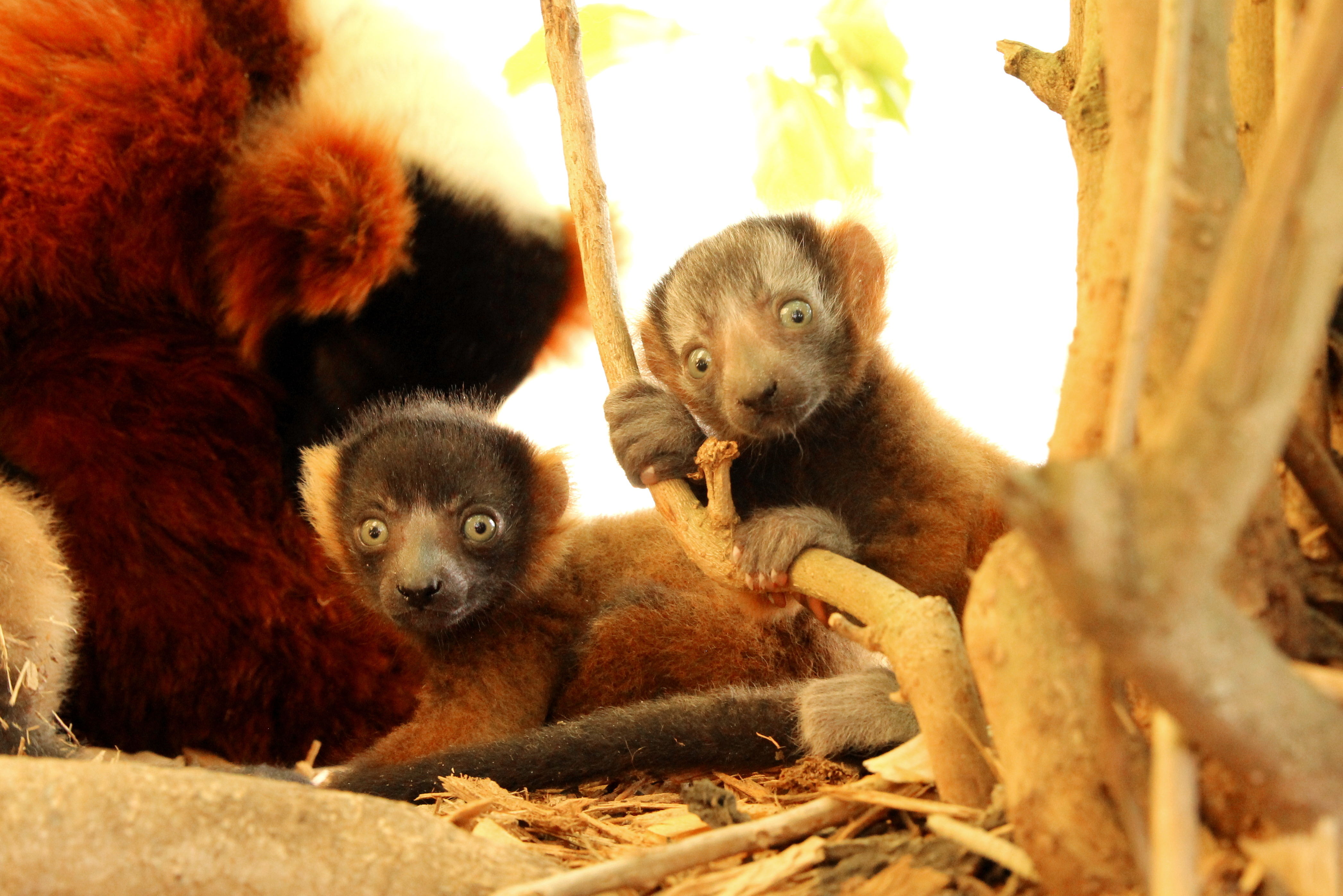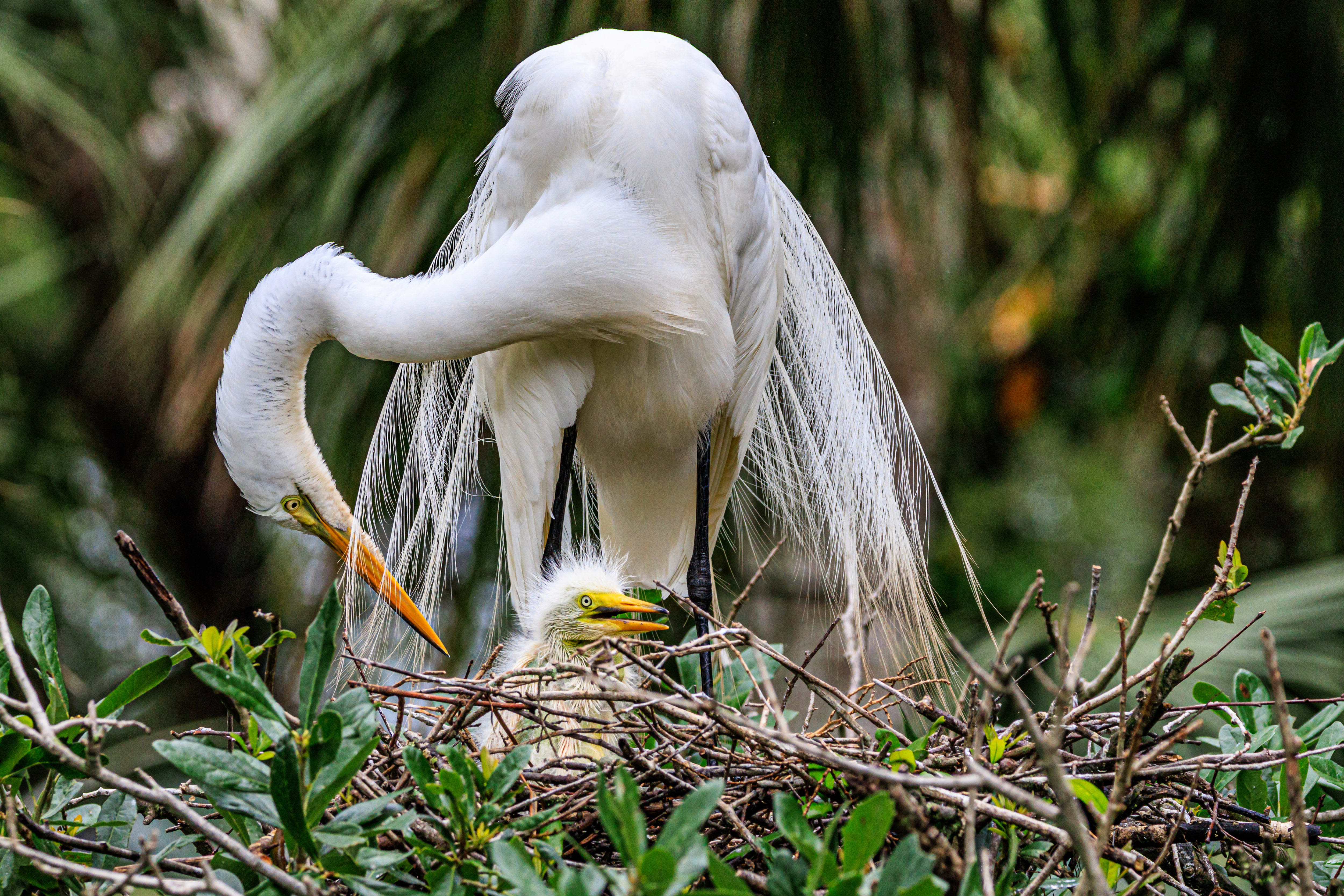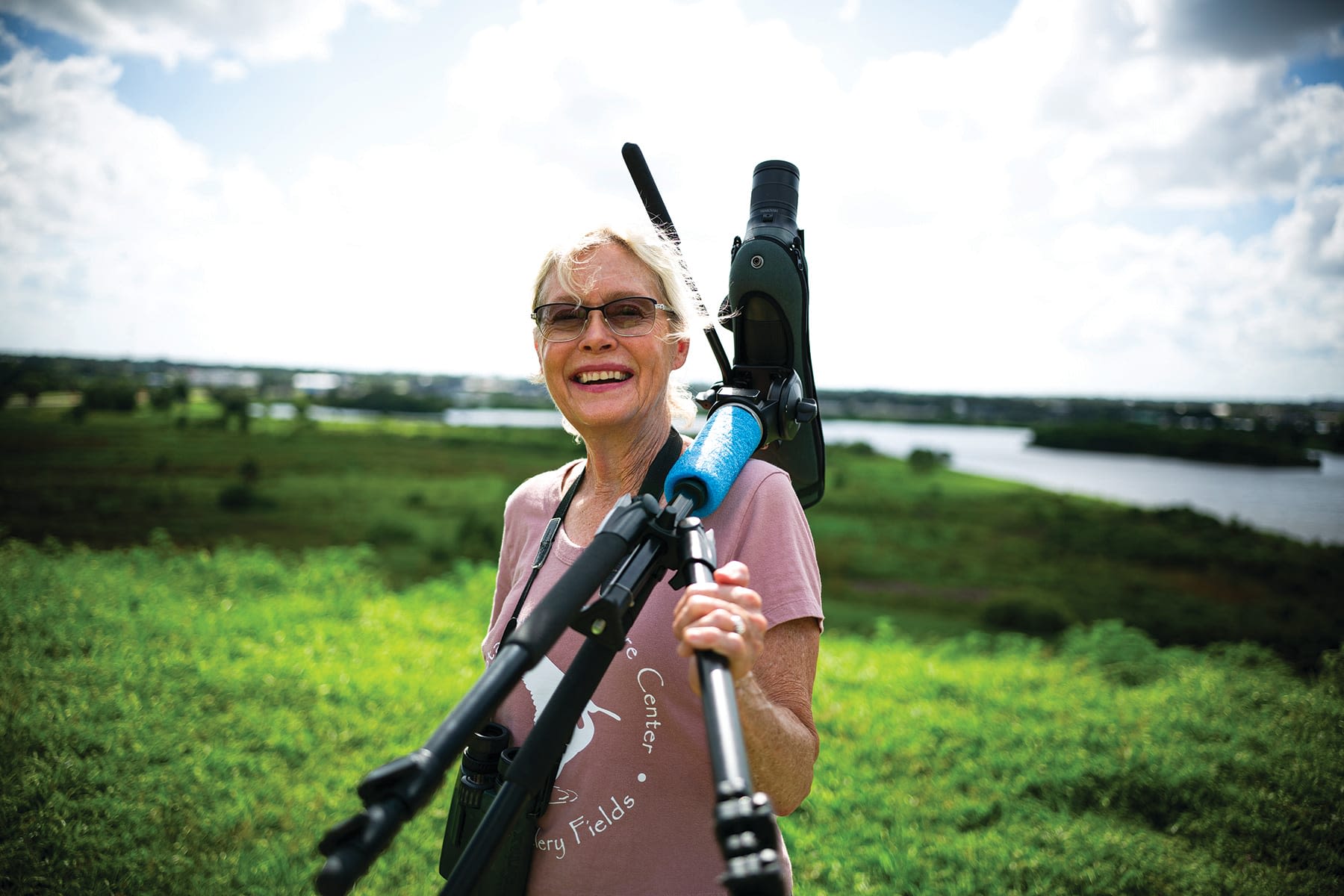Myakka City’s Lemur Conservation Foundation Celebrates Its 25th Year With Plans to Expand
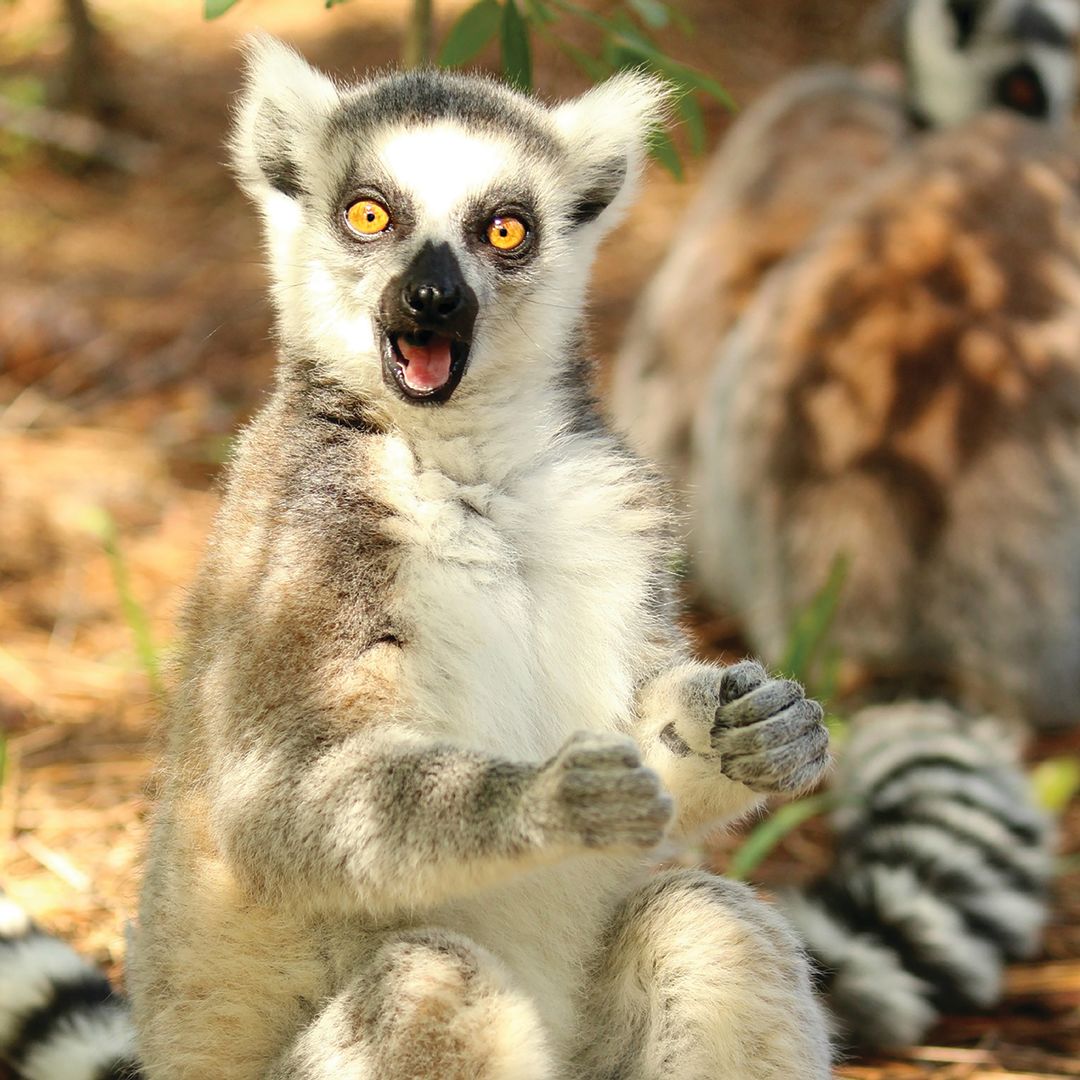
Lemurs live in family groups called conspiracies.
Sarasota seems an unlikely place to save the lemur from extinction. But the Lemur Conservation Foundation, now celebrating its 25th year, is one of the few facilities around the world that has become a “safety net” for the world’s oldest primate, whose real home is thousands of miles away in Madagascar, a Texas-sized island off Africa.
LCF was founded by Penelope Bodry-Sanders, another improbable player in the lemurs’ future. A former Dominican nun, Broadway actress and singer, and education staffer at the American Museum of Natural History, she took a trip to Madagascar in 1996 and became enchanted with lemurs after watching them romp among the trees and bask in the sun.
She also became aware of their plight. Changing climates, bushmeat hunting, geopolitics and habitat loss through farming and logging were decimating many of the more than 100 species of lemur, which had evolved in almost total isolation for tens of millions of years. When Bodry-Sanders returned to the states, she paid $35,000 for a large swath of forested land in Myakka that would suit lemurs.
Now nestled on 130 acres, LCF is a nonprofit captive breeding facility and one of only 14 of the world’s animal organizations accredited by the Association of Zoos and Aquariums for best practices in animal care. Two lemur buildings feature divided rooms for individual family units called “conspiracies” (apparently because the clever little creatures band together and conspire to outwit predators). Each space has ropes and branches to climb, plastic playground equipment and box nooks for lounging. Connecting corridors allow lemurs access to spacious enclosed forested areas where they can roam nearly 24/7.
LCF’s colony is an impressive 50 strong, with five different species represented. From the endangered species list are the common brown lemurs, the collared brown lemurs and the ring-tailed lemurs. The reserve also has the largest colonies in North America of the critically endangered mongoose lemurs and red ruffed lemurs.
Set near the habitats is an educational center filled with bookshelves and lemur-themed art. LCF is not open to the public, but staff, interns and visiting researchers can use guest cabins to study and lead programs. They share curiosities. Did you know lemurs have two tongues, one for eating and one for grooming, and fingernails on their tiny hands remarkably like our own?
Executive director Deborah Robbins Millman says the nonprofit is also expanding its environmental outreach programs in Madagascar. Along with field research, the staff offers educational and family health care services to the Malagasy people, plants trees to combat deforestation, provides fuel-efficient stoves to reduce wood consumption and monitors illegal activities. “It’s important to ensure not only that lemurs survive, but they have a home to return to,” explains Millman.
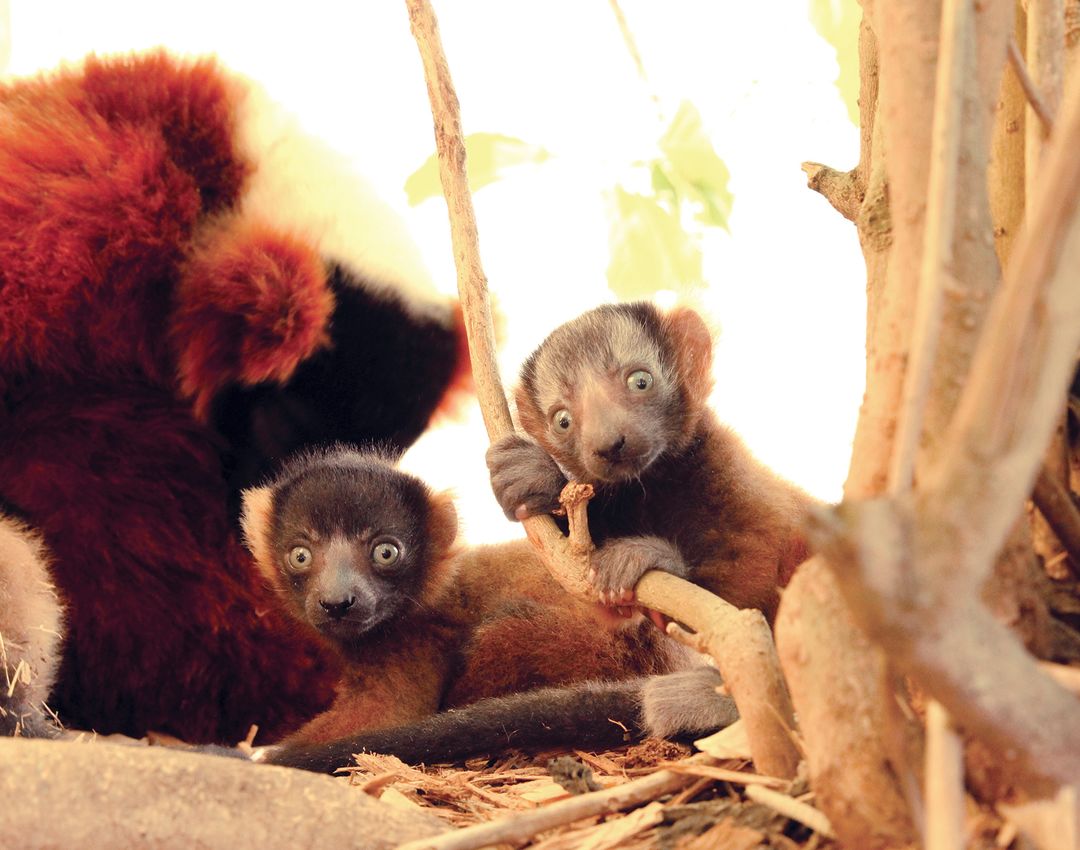
From left: baby lemurs Mangoky and Onilahy.
This year, despite Covid-19 challenges that created supply and volunteer shortages, and the chance that lemurs could contract the disease, LCF welcomed seven new additions to the family through its breeding program. These newcomers now need their own home, and LCF is in the works to build a third lemur house and expand its forested enclosures.
The team at LCF realize they cannot solve this multi-faceted problem alone. To bring a species back from the brink of extinction requires collaboration across many industries on many fronts, funding and a lot of hope. Millman says, “We are all part of one ecosystem and everything is connected. These species are unique and wonderful, and it would be a tragedy to lose such a gift.”
